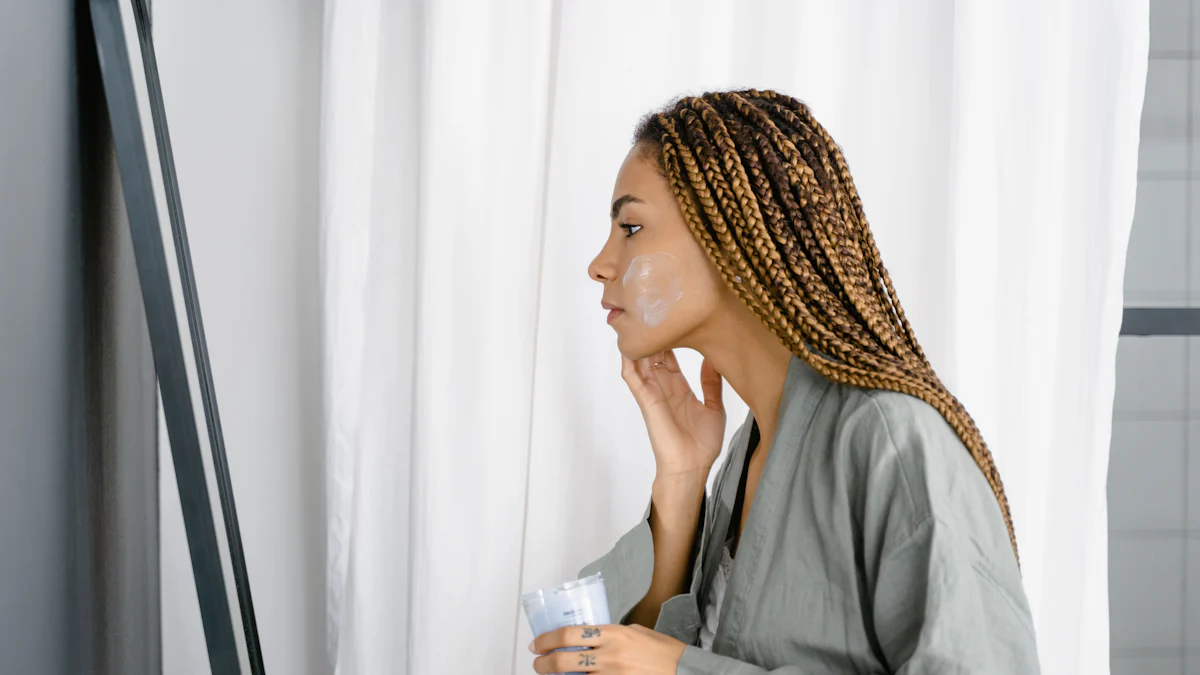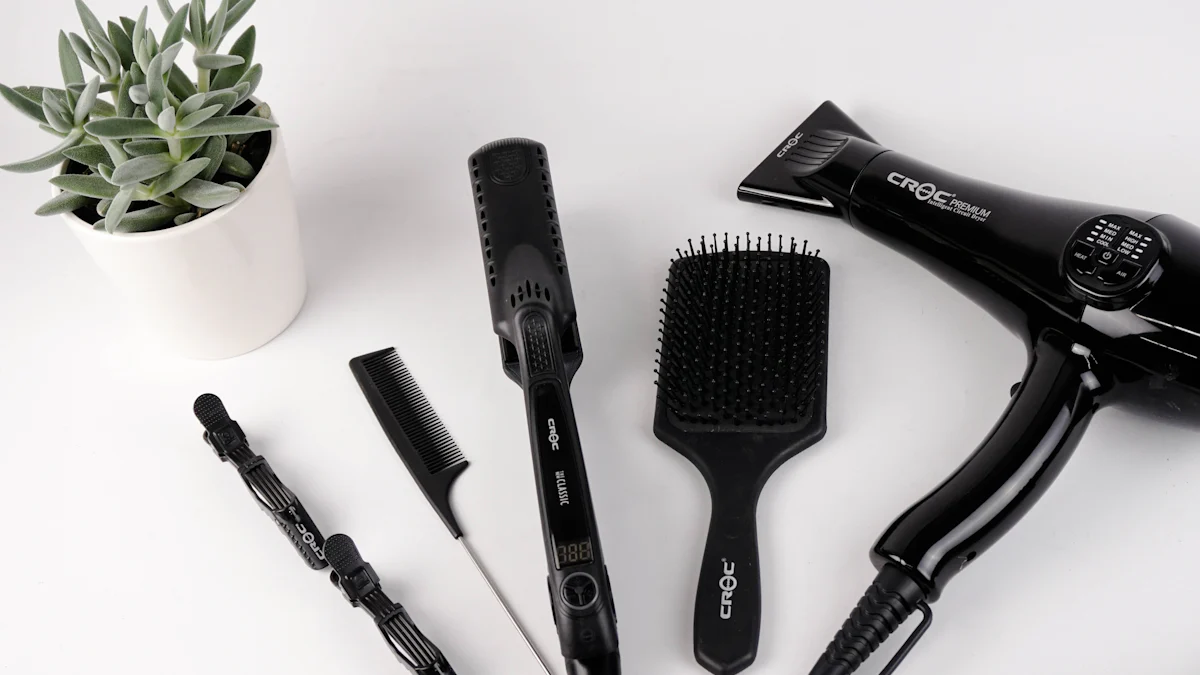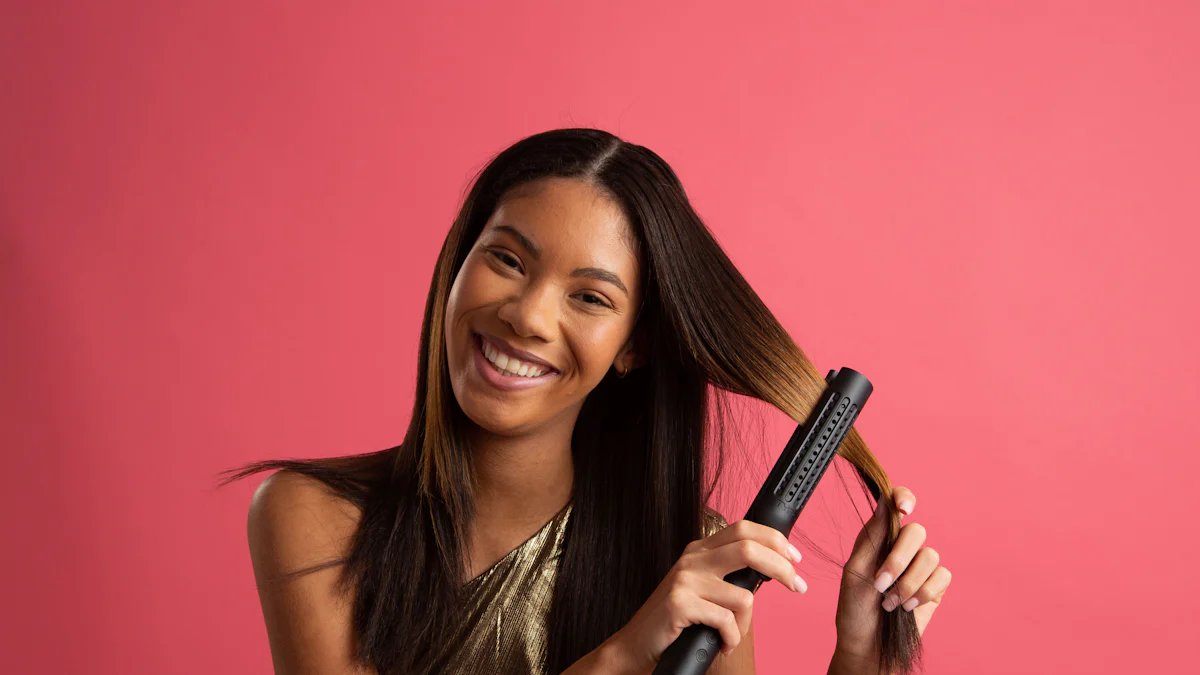Essential Tips for Maintaining Human Hair Braided Wigs

Human hair braided wigs have revolutionized the beauty industry. These wigs offer an alternative to traditional wigs and hair extensions. The market for these wigs has grown significantly, driven by their versatility and low maintenance. Celebrities like Beyoncé and Rihanna have popularized this trend, making it a staple in modern hairstyling. The economic impact of braided wigs is notable, especially in regions like Nigeria, where they create employment opportunities. Investing in a human hair braided wig provides a worthwhile addition to any beauty routine.
Choosing the Right Wig
Understanding Different Types of Braided Wigs
Box Braids
Box braids offer a classic and versatile style. These braids consist of square-shaped hair divisions. The sections create a uniform and neat appearance. Box braids can vary in size, from small to jumbo. Many people prefer box braids for their durability and low maintenance.
Micro Braids
Micro braids feature tiny, delicate braids. These braids provide a natural look and feel. Micro braids require more time to install due to their size. Despite the time investment, micro braids offer a lightweight and flexible option. This style suits those seeking a more intricate and detailed appearance.
Cornrows
Cornrows involve braiding the hair close to the scalp. This technique creates a continuous, raised row. Cornrows can form various patterns and designs. The style offers a sleek and polished look. Cornrows work well for both casual and formal occasions.
Factors to Consider When Selecting a Wig
Hair Type and Texture
Hair type and texture play crucial roles in wig selection. Human hair wigs offer a natural look and feel. Different textures, such as straight, wavy, or curly, cater to various preferences. Matching the wig texture with natural hair ensures a seamless blend.
Wig Cap Construction
Wig cap construction affects comfort and fit. Lace front caps provide a natural hairline. Full lace caps allow for versatile styling options. Monofilament caps offer a realistic scalp appearance. Choosing the right cap construction enhances the overall wig experience.
Length and Color
Length and color influence the final look of the wig. Shorter lengths offer easy maintenance. Longer lengths provide more styling options. Color choices range from natural shades to bold hues. Selecting the right length and color complements personal style and preferences.
Where to Buy Quality Braided Wigs
Online Stores
Online stores offer a wide variety of braided wigs. Websites provide detailed descriptions and customer reviews. Shopping online allows for convenient browsing and comparison. Reputable online retailers ensure quality products and secure transactions.
Physical Stores
Physical stores allow for hands-on inspection of wigs. Customers can feel the texture and see the color in person. Store staff can offer personalized assistance and recommendations. Visiting a physical store provides an opportunity to try on different styles.
Custom Wig Makers
Custom wig makers create wigs tailored to individual specifications. Customers can choose the exact style, length, and color. Custom wigs offer a perfect fit and unique design. Working with a custom wig maker ensures a personalized and high-quality product.
Installation Tips

Preparing Your Natural Hair
Washing and Conditioning
Clean natural hair ensures a healthy scalp and a secure wig fit. Use a mild shampoo to cleanse the scalp and hair thoroughly. Follow with a moisturizing conditioner to keep hair hydrated. Ensure hair is completely dry before proceeding to the next step. This prevents mildew and maintains hair health.
Braiding or Cornrowing
Braiding natural hair provides a smooth foundation for the wig. Cornrows work well for this purpose. They minimize friction and tension on natural hair. Secure the ends of the braids to prevent unraveling. This step protects natural hair and enhances wig stability.
Putting on the Wig
Securing the Wig Cap
A wig cap creates a barrier between natural hair and the wig. Place the cap over braided hair, ensuring full coverage. Adjust the cap for a snug fit without discomfort. A secure wig cap keeps the wig in place throughout the day.
Adjusting the Wig for a Natural Look
Position the wig on the head, aligning it with the natural hairline. Use adjustable straps or combs inside the wig for a secure fit. Smooth the wig to eliminate any bumps or gaps. This step ensures a seamless and natural appearance.
Blending with Natural Hair
Using Edge Control
Edge control products help blend natural hair with the wig. Apply a small amount along the hairline. Use a brush to smooth edges and create a polished look. This technique enhances the overall appearance and makes the wig look more natural.
Styling Tips for a Seamless Look
Styling the wig to match personal preferences enhances its natural look. Use gentle styling tools to avoid damaging the wig. Avoid excessive heat to maintain the integrity of the hair. Experiment with different styles to find the most flattering look. Proper styling ensures the wig complements natural features and boosts confidence.
Care Tips

Daily Maintenance
Brushing and Detangling
Regular brushing keeps a braided wig looking fresh. Use a wide-toothed comb or a wig brush designed for braided wigs. Start from the ends and work up to the roots. This method prevents breakage and maintains the integrity of the braids. Gentle brushing removes tangles and keeps the wig smooth.
Moisturizing the Hair
Moisturizing is essential for maintaining the softness of human hair braided wigs. Apply a light oil or leave-in conditioner daily. Products like coconut oil or olive oil work well. Focus on the ends and avoid the roots to prevent buildup. Regular moisturizing keeps the hair supple and shiny.
Washing the Wig
Recommended Products
Use sulfate-free shampoo and conditioner for washing braided wigs. Sulfate-free products are gentle and preserve the hair's natural oils. Choose shampoos and conditioners specifically designed for braided or textured hair. These products maintain the wig's quality and appearance.
Step-by-Step Washing Guide
Prepare the Wig: Gently brush the wig to remove any tangles.
Mix Shampoo with Water: Dilute a small amount of shampoo in lukewarm water.
Wash the Wig: Submerge the wig and gently swish it around. Avoid rubbing or scrubbing.
Rinse Thoroughly: Rinse the wig with clean, lukewarm water until all shampoo is removed.
Condition the Wig: Apply a diluted conditioner and let it sit for a few minutes.
Rinse Again: Rinse the wig thoroughly to remove all conditioner.
Dry the Wig: Pat the wig dry with a towel and let it air dry on a wig stand.
Expert Testimony:
YWigs, a hair care expert, advises, "Prevent Mildew by Not Getting Braids Too Wet: When you clean your wig, make sure your real hair underneath stays dry to avoid mildew."
Storing the Wig
Proper Storage Techniques
Proper storage extends the life of a braided wig. Store the wig on a wig stand to maintain its shape. Keep the wig in a cool, dry place away from direct sunlight. Cover the wig with a satin or silk scarf to protect it from dust.
Avoiding Damage
Avoid storing the wig in cramped spaces. Cramped storage can cause the braids to tangle and lose their shape. Ensure the wig is completely dry before storing to prevent mildew. Regularly check the wig for any signs of damage and address issues promptly. Proper storage techniques keep the wig looking new and extend its lifespan.
Styling Tips
Heat Styling
Using Heat Protectants
Heat styling can enhance the look of a braided wig. Always apply a heat protectant before using any heat tools. Heat protectants shield the hair from damage. Products like sprays or serums work well. Ensure even distribution for maximum protection.
Safe Temperature Settings
Using the correct temperature settings is crucial. Set heat tools to a low or medium setting. High temperatures can damage human hair wigs. Use a flat iron or curling iron with adjustable settings. Test on a small section first to avoid potential damage.
Non-Heat Styling
Braiding and Twisting
Non-heat styling methods maintain the integrity of the wig. Braiding and twisting offer versatile styling options. Create different braid patterns for unique looks. Twisting sections of hair adds texture and volume. These methods keep the wig looking fresh without heat damage.
Using Rollers and Rods
Rollers and rods provide another non-heat styling option. Use foam rollers for soft curls. Flexi rods create defined waves. Apply to damp hair and let air dry. This method preserves the quality of the wig. Experiment with different sizes for varied styles.
Testimonial:
YWigs, a hair care expert, advises, "Braided wigs, such as knotless and box braids, have gained immense popularity as a protective hairstyle for afro-kinky hair. With the right care and attention, a high-quality braided wig can maintain its allure for up to two years."
Budget Savvy Diva highlights, "Protective styling: For people with natural hair, braided wigs provide a protective option that enables hair to rest from heat treatment and harsh chemicals."
Proper styling techniques ensure a long-lasting and beautiful braided wig.
Explore the versatility and convenience of a human hair braided wig. These wigs offer endless styling options and low maintenance. Proper care ensures longevity. Regularly brush and moisturize the wig. Use sulfate-free products for washing. Store the wig properly to avoid damage. Share experiences and ask questions in the comments. Engage with the community to learn more tips and tricks.






















